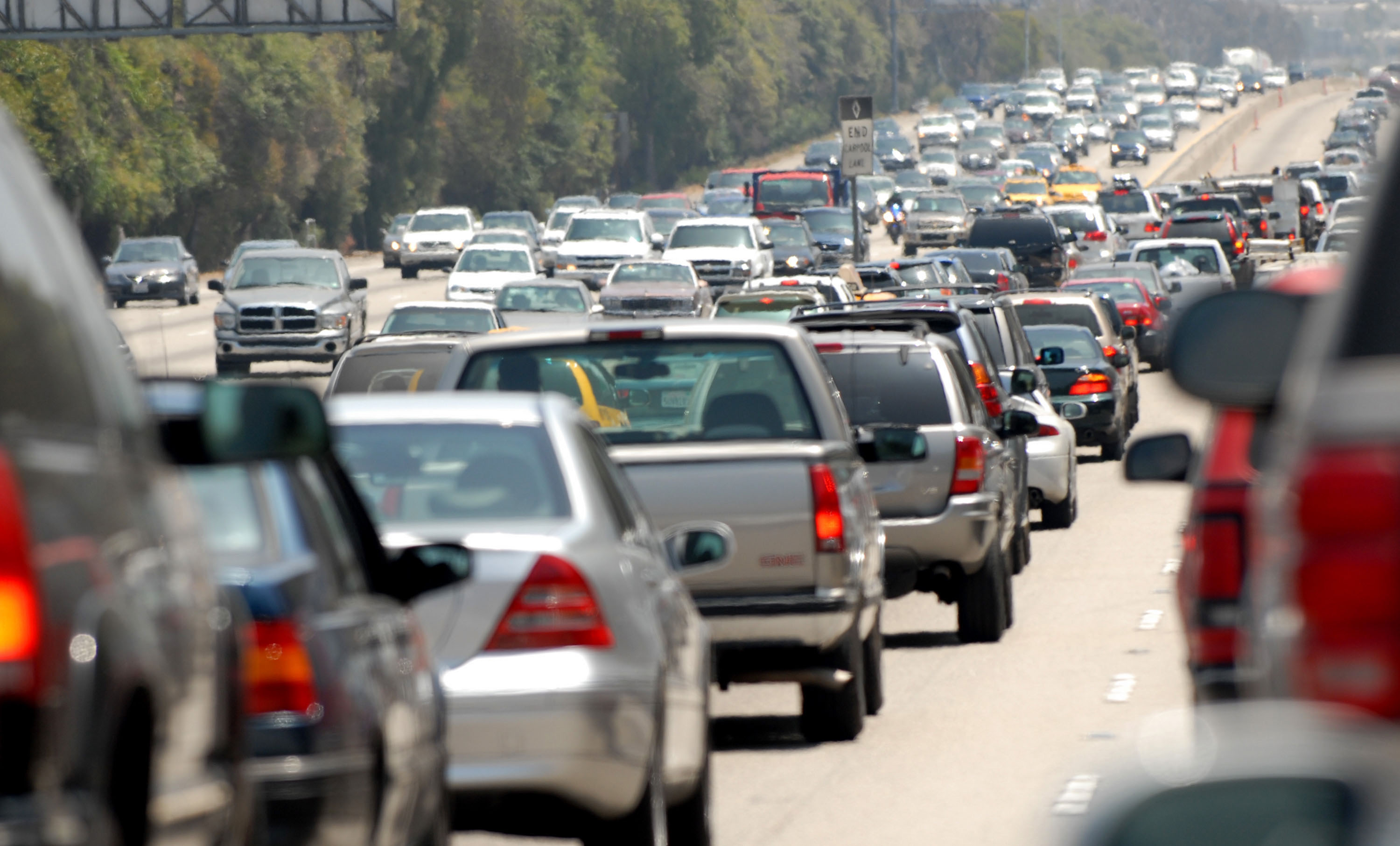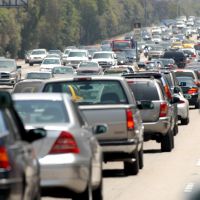Watching the sun set into the Pacific Ocean from a hotel tucked in among the dry scrub hills of San Diego, I have a chance to reflect on life here in Southern California, on climate changes and on what's in store for future generations.
I'm here with a group of 22 Japanese university students who will spend a month studying English at San Diego State University, and I'll stay a week while they settle into their classes and host families.
As always, I'm charmed by the students' optimism and contagious excitement. Meeting other young people from around the world who share their same giddy enthusiasm, they're beginning to shape their individual hopes and dreams.
Tonight they are with their host families, giving me some time off.
From my hotel, I watch streams of cars on the highways that crisscross the valley below and gaze up at jets as they climb into the sky from the city's airport. Darkness has begun to blot out the urban sprawl, replacing it with a blanket of twinkling lights and a sky of vibrant orange and yellow hues.
Were the students here now they would be posing for smartphone snapshots with the sunset as a backdrop, and I'd be enjoying the buzz of their excitement.
But I have been reading "The Weather Makers: Our Changing Climate and What it Means for Life on Earth" and I can't help thinking about the environmental legacy we are leaving these kids and future generations.
My thoughts focus on the 24/7 exhaust from the cars and planes and I wonder how much these emissions are magnifying the colors of the sunset.
In my head I hear my 17-year-old son grumbling, "Dad, you think too much!" But he and his peers are the reason my thoughts focus on what our fossil-fuel addiction is doing to the planet.
Readers familiar with this column know that I am not a climate-change skeptic. I have talked to too many experts, read too much research and seen too many parts of our world to doubt that human greenhouse-gas emissions are playing a key role in the global warming that is driving planetary climate change.
If you disagree, or still question whether human activities are a primary cause of climate change and the transformation of ecosystems worldwide, I doubt I can convince you otherwise. But perhaps Tim Flannery can, the author of "The Weather Makers."
Though much research has been done since Flannery's book came out in 2005, it is still solidly on track as a primer for climate change, its causes and effects. If fault must be found, Flannery's commitment to detail might frustrate some readers. For others, the details prove the premise.
For example, he spends a chapter on frogs and toads, detailing how warming ocean temperatures along Costa Rica's Pacific coast pushed cloud banks above the coastal forests, ending the misty conditions that were essential to the survival of numerous frogs species, including the golden toad. They have vanished.
"The golden toad was the first documented victim of climate change," Flannery writes. "We killed it with our profligate use of coal-fired electricity and our oversize cars just as surely as if we had flattened its forests with bulldozers."
But Flannery is not a sentimental tree-hugger. Simply he can see the trees in the forest, and the forest as a whole, and he can explain how each individual and the entire ecosystem are mutually dependent.
Moving from macro to micro and back, Flannery helps the reader understand our planet's atmosphere, its oceans, it terrestrial ecosystems, and how the three are inextricably interconnected. Examples such as the golden toad help the reader to connect the dots and understand how rising levels of carbon dioxide affect the planet.
Flannery, who is chief commissioner of the Australian Climate Commission, was named Australian of the year in 2007, and is currently a professor, holds the Chair in Environmental Sustainability at Macquarie University.
With "Weather Makers" on my mind, I flew to Los Angeles then on to San Diego, where I was reminded how addicted Americans are to their cars, and to carbon dioxide.
Unlike Japan, where you can go just about anywhere using public transport, most everyone in L.A. uses a car to get around. L.A. has the second worst traffic congestion in the United States, with drivers wasting approximately 56 hours per year in traffic jams, according to the Time NewsFeed website. The only city worse than L.A. is Honolulu, where drivers spend as much as 58 hours a year stuck in traffic.
In San Diego, too, which boasts a reasonably good bus and train network, cars are nearly essential. On the flight from L.A. to San Diego, I sat next to a university student who laughed when I asked if she uses mass transit. Every member of her family has a car, she said — all eight of them.
But fossil-fuel use is not the only environmental problem in California: For first-time visitors it may be a surprise to see how dry L.A. and San Diego are. Both cities are built on scrub-covered plains and hills, with deserts just a stone's throw away.
So where do they get their water?
In San Diego, 50 percent comes from the Colorado River, 30 percent from northern California, and just 20 percent from local sources.
Los Angeles is even less self-sufficient. Only about 10 percent of its water is sourced locally, meaning that without water pumped in from the north and east, L.A. would simply dry up and disappear.
With extreme drought already a spreading problem on the American West Coast, what will happen if climate change reduces precipitation in the mountains of California and in those that fill the Colorado River, California's lifeline?
The day after I arrived in San Diego I was invited to a surfing competition held on the beach in La Jolla at the Scripps Institution of Oceanography. The event was held to raise money for the University of California San Diego Moores Cancer Center, which sits on the hills above Scripps.
It was a perfect California day for me, visiting the famed Scripps institute, seeing my first surfing competition and having a chance to support research into cancer, a disease that has touched many of my family and friends.
But again, "Weather Makers" brought to mind thoughts of excess carbon dioxide in the atmosphere and ocean acidification. Flannery looks back 55 million years to the oldest climate aberration known to scientists, a time when acidification caused the entire ecosystem of the deep oceans to suffer massive extinctions.
I took up this same topic three years ago in September 2009, when I first learned about acidification from Sven Huseby and his documentary, "A Sea Change: Imagine a World Without Fish" (www.japantimes.co.jp/text/fe20090823sh.html)
Acidification results as we burn more fossil fuels, increasing carbon dioxide in the atmosphere, causing the oceans to absorb more carbon.
"Carbonic acid lowers the natural pH (alkalinity) of our oceans. That decreases the available calcium carbonate that is essential for the formation of bones in fish, shells on crustaceans, and reef material from corals. The effects of the addition of CO2 to the ocean ripple across many species, including humans who rely on the sea for both sustenance and economic survival," explains Husby's website.
So where to from here?
"The best evidence indicates that we need to reduce our CO2 emissions by 70 percent by 2050," writes Flannery. But how can we make the dramatic cuts in fossil-fuel use and CO2 emissions that are necessary?
"The transition to a carbon-free economy is eminently achievable because we have the technology we need to do so. It is only a lack of understanding and the pessimism and confusion generated by special-interest groups that is stopping us from going forward," he insists.
Wind, solar and geothermal are a few of the alternatives available. More important, conservation is key. From energy to water, simply using less is essential.
Less demand for energy, less nuclear, less fossil fuels, more alternative sources of energy. If Japan can lead, perhaps other nations can muster the political will to follow.
For the generations that will inherit our climate, this seems the least we can do.
Special thanks to Stephen Harris, a Tokyo-based lawyer and keen observer of all things legal and environmental who gave me his dog-eared copy of "The Weather Makers." Stephen Hesse teaches in the Chuo University Law Faculty and is director of the Chuo International Center. He can be reached at [email protected].




